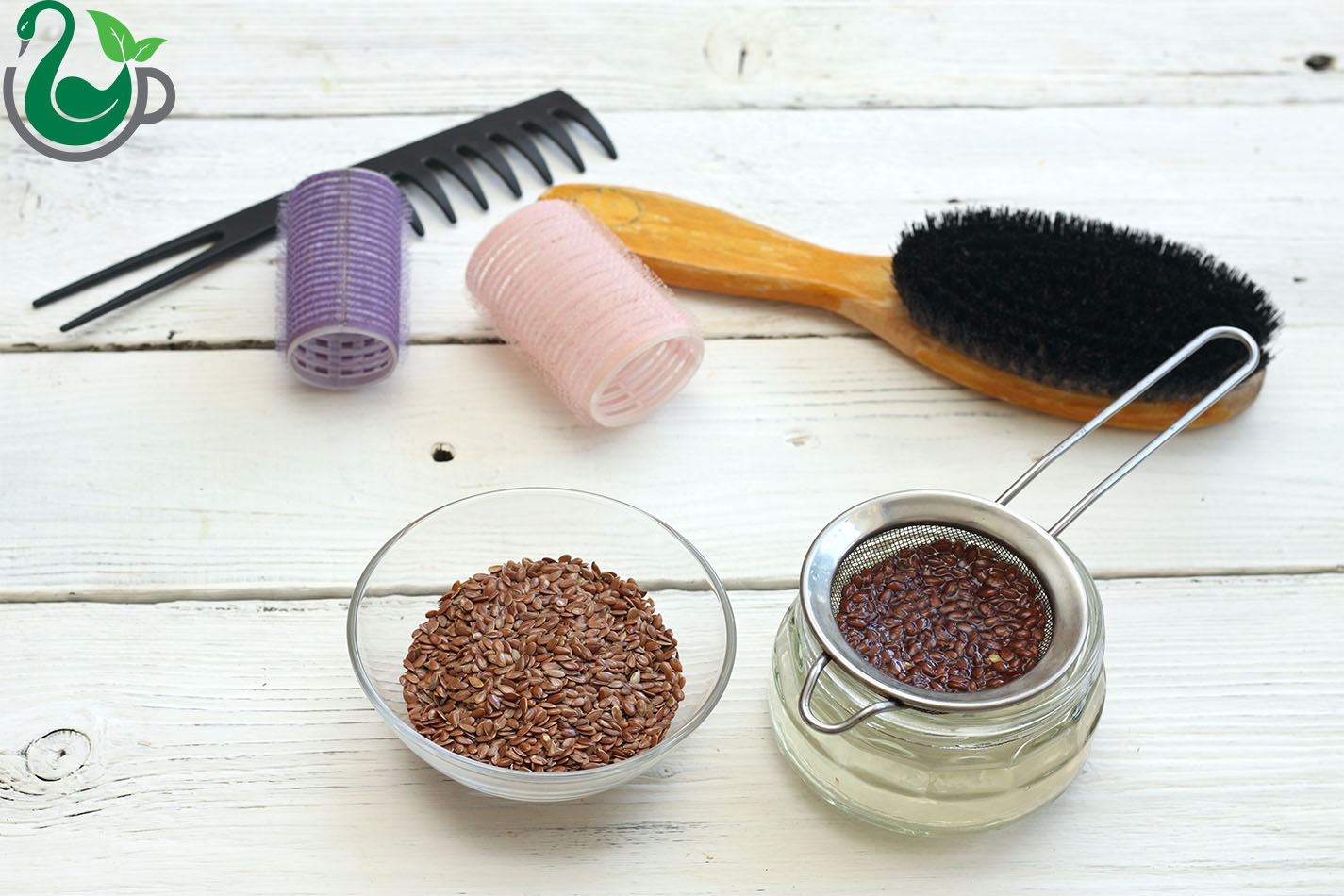Flaxseed, recognized as a valuable superfood, offers numerous health benefits, particularly for skin and hair. In this article, we will explore the beneficial effects of flaxseed gel and oil on hair and scalp and see how these ingredients can contribute to stronger and more beautiful hair. Due to its richness in omega-3 fatty acids, fiber, and the antioxidant lignan, flaxseed has gained significant popularity. The fiber, lignan, and flaxseed oil possess various health-promoting properties, such as reducing cardiovascular diseases, atherosclerosis (plaque buildup inside the arteries), diabetes, cancer, arthritis, and neurological disorders. Additionally, flaxseed is packed with fatty acids and antioxidants that help remove toxins and dead cells from the scalp. (1)

Flaxseed gel is a powerful moisturizer with conditioning properties, softening the hair and adding volume without causing dryness. (2) Additionally, flaxseed gel stimulates hair growth and improves hair strength. (1) It also nourishes the hair, helping to prevent hair loss by strengthening and protecting it. The antibacterial and antifungal properties of flaxseed gel aid in treating scalp infections and dandruff. (3)
Let's now examine the beneficial effects of the nutrients found in flaxseed on hair and scalp health:
1. Omega-3 Fatty Acids: Omega-3 can provide essential nutrients for hair and scalp. It reduces inflammation of the hair follicle, helping to decrease hair loss. Additionally, by improving blood circulation in the scalp, omega-3 can play a role in promoting hair growth.
2. Antioxidants: Flaxseed contains lignan, a type of antioxidant. Lignan helps prevent bacterial growth and is effective in hair regeneration and reducing hair loss.
3. B Vitamins: Flaxseed is a consistent source of B vitamins. These vitamins contribute to stronger, healthier hair and promote faster hair growth.

4. Fiber: Fiber plays a crucial role in hair health. Many hair products include added fiber to help reduce hair damage and prevent hair loss.
5. Vitamin E: Flaxseed is rich in vitamin E, a powerful antioxidant essential for hair growth. Vitamin E helps prevent scalp tissue damage and reduces hair loss. Additionally, it nourishes the hair, contributing to its health and vitality. (4)
You can easily make flaxseed hair gel through a simple boiling process, making it an affordable and convenient option. Regularly incorporating flaxseed gel and oil into your hair care routine can help strengthen and maintain the natural beauty of your hair. These nutrient-rich ingredients, with their ability to combat hair loss and improve scalp health, are an ideal choice for individuals seeking natural and effective solutions for hair care.
References:
1. Manjula, D., Josephine Leno Jenita, J., Premakumari, K.B., & Banu, S. (2018). Formulation and evaluation of flaxseed hair gel: a natural hair tamer. International Journal of Research in Pharmacy and Chemistry (IJRPC), 8(3), 487-491. Retrieved from https://www.ijrpc.com
2. Tiwari, R., Tiwari, G., Yadav, A., & Ramachandran, V. (2021). Development and evaluation of herbal hair serum: a traditional way to improve hair quality. The Open Dermatology Journal, 15, 52-58. Retrieved from https://opendermatologyjournal.com
3. Aghav Rushikesh, P., Vyavhare Dnyaneshwar, M., Pakhare Rushikesh, A., & Salve Megha, T. (2024). Exploring the Antifungal and Antidandruff Properties of a Flaxseed-Based Herbal Gel: Formulation and Evaluation. International Journal of Advance Research and Innovative Ideas in Education (IJARIIE), 10 (3), 1225-1238. Retrieved from https://ijariie.com
4. Chaugule, A., Zinjad, S., & Lokhande, R. (2022). Formulations and Evaluation of protective role of Flaxseed Gel in hair Growth, Nourishment and Anti-dandruff activity. Journal of Emerging Technologies and Innovative Research (JETIR), 9(6), c272-c278. Retrieved from https://www.jetir.org